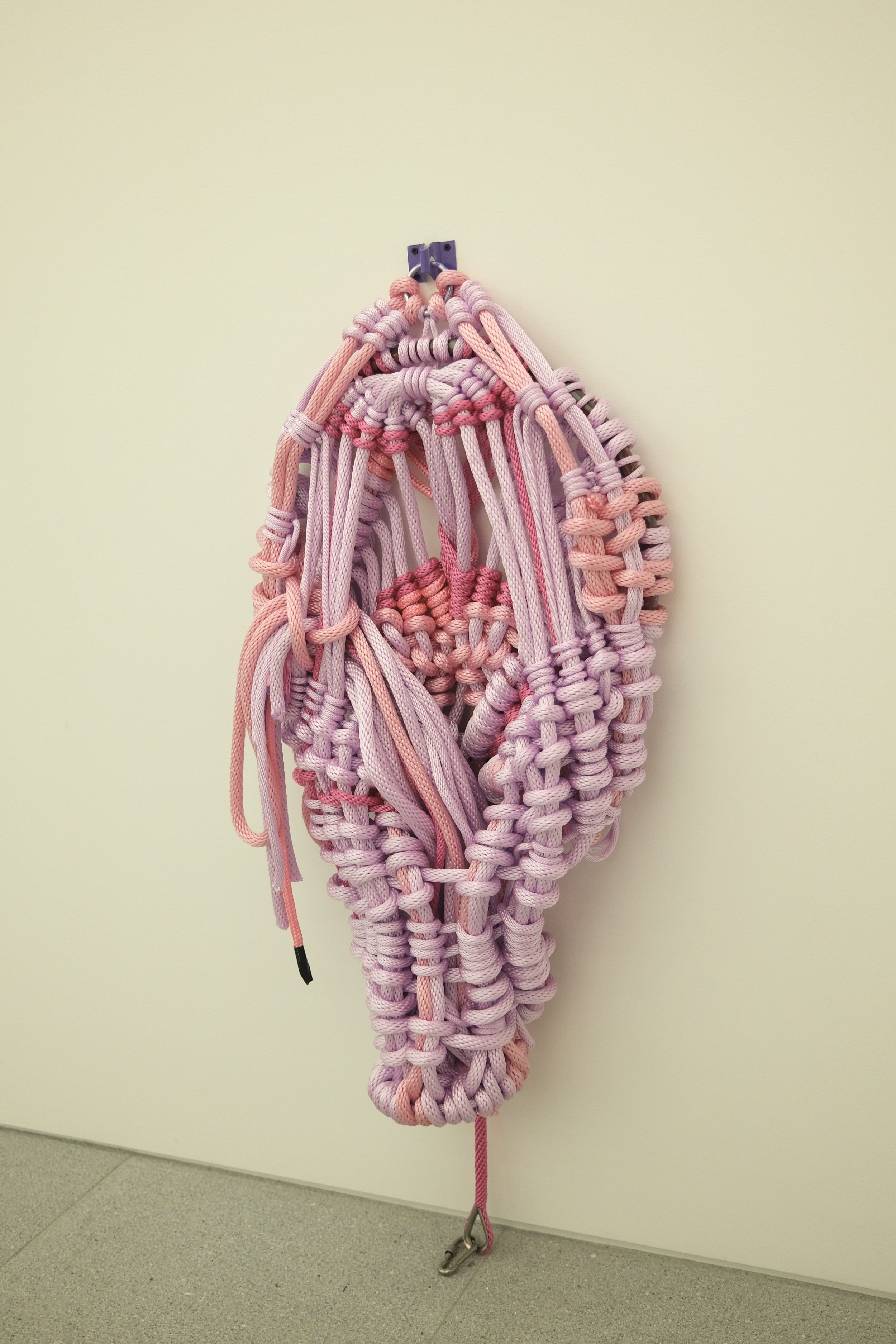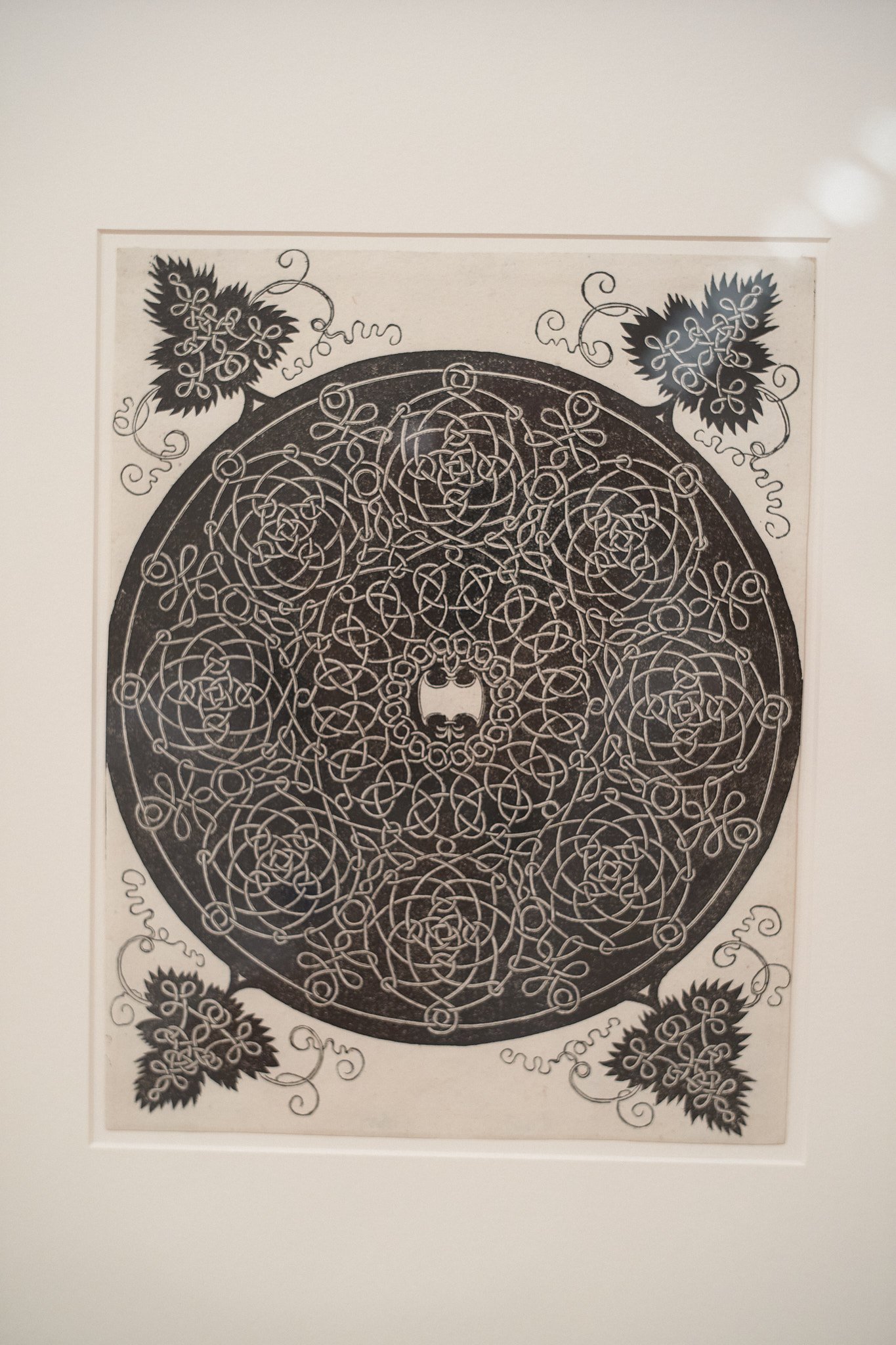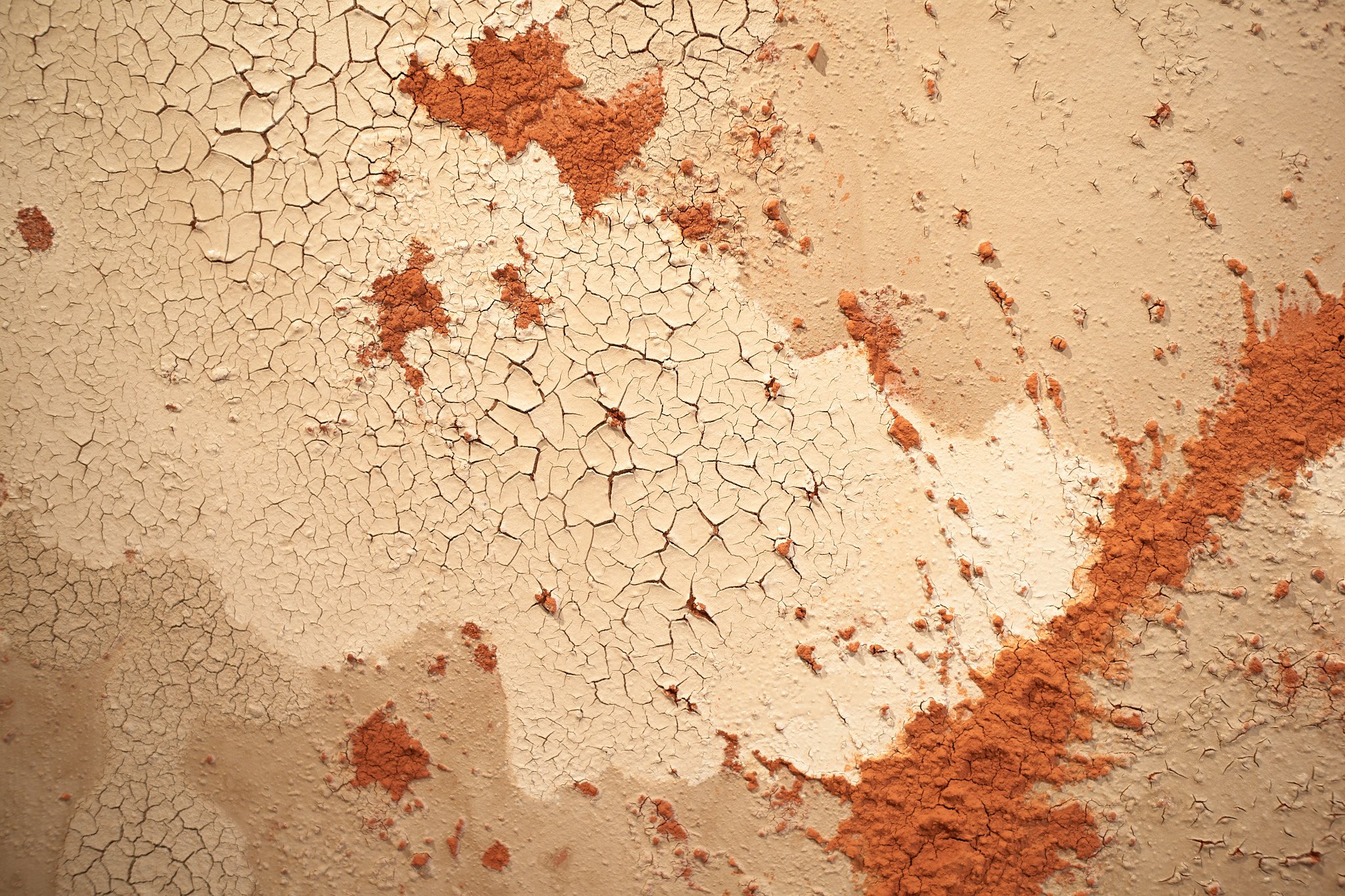Conversations with Cezanne
When Lecomte evaluated Cézanne so intelligently in 1899, "abstraction" had not yet settled into its twentieth-century, formalist definition. Nor had images called "abstract" abandoned representational reference, as they would begin to do not long after Cézanne's passing. The meaning of
"abstraction," circa 1900, was fluid and confused, an amalgam of contested notions. Regardless of anything Cézanne said, it was his technique that caused many of his witnesses to link the autonomy of his form and the purity of its beauty to a process of abstraction. This turn in interpretation entailed a certain irony: "form" and "beauty" were conceptual entities suited to endless verbal philosophizing, precisely what Cézanne disliked in Bernard among others. To reconcile abstraction, itself an "abstract" notion with the very physical nature of Cézanne's painting, most of those familiar with him claimed that his abstraction developed from the senses, not the intellect—more intuitive harmony than science of color, more spontaneous rhythm than planned geometry. This variant of "abstraction" broke from the term's nineteenth-century connotation of intellectual excess (we still say that certain arguments are "too abstract," or that a mentally distracted person has an "abstract" look). Lecomte's perception that Cézanne's style satisfied antithetical demands coming from impressionist naturalism and symbolist idealism was ingenious and should have been adequate to the situation; but other commentators began to acknowledge somewhat different alignments, cognizant of competing notions of "abstraction." For Denis, the conflict between Monet's impressionism and Gauguin's symbolism amounted to a dispute between sensualist lovers of nature and rationalist devotees of abstract form. Reacting to attitudes that troubled him in others, Denis complicated matters by switching sides in the ongoing debate. First he praised, then he denigrated abstraction, lamenting Cézanne's inadvertent role in furthering it.
Why all this happened is crucial to the historical fortune of Cézanne's art. At the beginning of the twentieth century, Denis (like many others) observed that artists of his own age were being dehumanized by the leveling effects of modern urban life-mechanization, commodification, standardization, social regulation—all leading to impoverishment of both intellectual and spiritual experience. He argued that the remedy could be found in an "abstract ideal, the expression of inner [mental] life or a simple decoration for the pleasure of the eyes.", Under the circumstances, the representational arts would strive to mask out dull environmental realities, "evolving toward abstraction." However much this kind of "abstraction" might appeal to the intellect and imagination (subjective "inner life"), it would retain a distinct material component, located in a purified form and a straightforward procedure (the objective "beauty" of "a simple decoration"). Cézanne was exemplary because his marks appeared independent of any strict mimetic function and were also very physical, therefore representing a material (not conceptual) abstraction of the painting process. This was an aestheticized, humanized materialism, intense in both sensation and spirit; it seemed fit to counter the anesthetizing materialism of modern bourgeois existence.
page 30 -
Documents of Twentieth-Century Art
Conversations with Cézanne
Michael Scott Doran, Julie Lawrence Cochran (Translator), Richard Shiff (Introduction)
Elysium: A Visual History of Angelology
Krishnamurti's major theological contention could be summarized by his statement "Truth is a pathless land," the belief that the angelic, or the divine, or the transcendent, or the absolute must forever be inaccessible to logical language, that no route can bring the initiate to that kingdom, and so the only means of approaching it is poetic rather than rational. At a 1929 address in the Netherlands, Krishnamurti proclaimed, "Truth, being limitless, unconditioned, unapproachable by any path whatsoever, cannot be organized ... A belief is purely an individual matter, and you cannot and must not organize it. If you do, it becomes dead, crystallized; it becomes a creed, a sect to be imposed on others... Truth cannot be brought down, rather the individual must make the effort to ascend to it." Just as quantum mechanics posits that all sorts of truths about the universe —say, the exact location or velocity of an individual particle —must remain ambiguous and are only decided upon by the arbitrary intercession of the observer, Krishnamurti describes something similar about the divine. Despite his training in Theosophy, such beliefs are perfectly consistent with many interpretations of Eastern religions, but they're also congruent with the idealist mystical belief that the universe only exists if it's being observed, and that God and his retinue are always doing the observing. Both Krishnamurti and Bohm were radical monists, believing in one substance, but rather than matter that substance was mind. The conclusions of quantum mechanics-demonstrated by mathematics and proven by experimentation-were disturbing to physicists who had been trained in the static model of Newtonian science; that some results seem to require consciousness appeared anathema to them. Yet the numbers were what the numbers were, the observations and experiments revealed what they had. On some level, there was a wisdom to assuming that the counterintuitive logic of quantum theory implied that consciousness permeated existence, as that would be the only way to make any sense of such strange results. As Bohm would audaciously declare in an essay published in 1987 in the collection Quantum Implications: Essays in Honor of David Bohm, "Even the electron is informed with a certain level of mind."
Elysium: A Visual History of Angelology
Page 340
Elysium: A Visual History of Angelology
Cornelius Agrippa in The Occult Philosophy, one of the most influential theurgic texts of the Renaissance, states the Neoplatonist ethos succinctly when he writes that the "world is an elemental, celestial and intellectual triad where every lower thing is ruled by something higher and receives that mighty influence whereby-through angels, heavens, stars, elements. animals, plants, metals and stones —the archetypal and supreme Craftsman transfers his omnipotent powers into us, having made and created all of them to serve us."
Elysium: A Visual History of Angelology
Ed Simon - pg 118
Keiichi Tanaami: Adventures in Memory
Christiane Pooley " Geographies of Love "
Yukie Ishikawa, Akane Saijo
Sum of the Parts: Serial Imagery in Printmaking, 1500 to Now
and some Gustave Moreau, Salomé Dancing before Herod, 1876 from their permanent collection
The Miraculous Arms Curated by Martha Kirszenbaum
Barbati, Venezia an arena, a group exhibition presented in collaboration with Nonaka-Hill, Los Angeles
Elysium: A Visual History of Angelology
Helpful to remember, lest one confuse contextual representation with reality when parsing the intricacies of the incorporeal and ineffable. Angels don't have blond hair because angels don't have hair; angels don't have blue eyes because they don't have eyes (or they have dozens of them). There is nothing wrong, of course, with imagining angels in the form of humans, only with mistaking a small segment of examples for the universal standard. Which is what's so fascinating about the earliest representations of such beings, which flout the conventions of the angelic as they've been transmitted in Western culture, or for that matter the response from those who suffered under colonialism and imagined angels as appearing like themselves. In the contact zones of early modern colonialism, beginning in the sixteenth century and continuing until the modern era, and with a particular zenith during the so-called Age of Reason, people developed syncretic religious traditions between Christianity and their own indigenous faiths, in which divine intermediaries often played an integral role. From Africa to Latin America, India to North America, artists often depicted angels in the visual idiom of their own cultures.
How to Be Truly Free: Lessons From a Philosopher President
Humans can create infinite needs. The market dominates us, and it robs us of our lives. Humanity needs to work less, have more free time and be more grounded. Why so much garbage? Why do you have to change your car? Change the refrigerator? There is only one life and it ends. You have to give meaning to it. Fight for happiness, not just for wealth.
Q: Do you believe that humanity can change?
It could change. But the market is very strong. It has generated a subliminal culture that dominates our instinct. It's subjective. It's unconscious. It has made us voracious buyers. We live to buy. We work to buy. And we live to pay. Credit is a religion. So we're kind of screwed up.
Q: It seems you don't have much hope.
Biologically, I do have hope, because I believe in man. But when I think about it, I'm pessimistic.
Q: Yet your speeches often have a positive message.
Because life is beautiful. With all its ups and downs, I love life. And I'm losing it because it's my time to leave. What meaning can we give to life? Man, compared to other animals, has the ability to find a purpose. Or not. If you don't find it, the market will have you paying bills the rest of your life. If you find it, you will have something to live for. Those who investigate, those who play music, those who love sports, anything. Something that fills your life.
…
I have one thing. The magic of the word. The book is the greatest invention of man. It's a shame that people read so little. They don't have time. Nowadays people do much of their reading on phones. Four years ago, I threw mine away. It made me crazy. All day talking nonsense. We must learn to speak with the person inside us. It was him who saved my life. Since I was alone for many years, that has stayed with me. When I'm in the field working with the tractor, sometimes I stop to see how a little bird constructs its nest. He was born with the program. He's already an architect. Nobody taught him. Do you know the hornero bird? They are perfect bricklayers. I admire nature. I almost have a sort of pantheism. You have to have the eyes to see it. The ants are one of the true communists out there. They are much older than us and they will outlive us. All colony beings are very strong.
….
Life is a chain and it is still full of mysteries.
What a complicated animal man is. He's both smart and stupid.
Conversations with Cezanne
CÉZANNE SPEAKS…
(I publish [...] these notes collected by Cézanne's son without adding one line of my own, not wanting to alter in any way the thoughts, reflec-tions, and opinions of the artist ...)
I Critics' opinions about art are formulated more on literary principles than on aesthetic ones.
Il The artist must avoid literature in art.
Ill Art is the manifestation of an exquisite sensitivity.
Iv Sensitivity defines the individual. At its highest level, it identifies an artist.
v Great sensitivity is the most powerful characteristic of any beautiful artistic creation.
vi The most seductive element in art is the artist's own personality.
vIl The artist gives form to his sensibility, to his own, innate individuality.
vIll The nobility of an artist's creation reveals his soul.
Ix The artist materializes and individualizes.
x The artist knows the joy of being able to communicate to others his excitement about nature, that masterpiece whose mysteries he believes he has deciphered.
xI Genius is the ability to renew one's emotion by daily contact with nature.
xII For the artist seeing is creating; creating is composing.
XIII Because the artist does not note down his emotions as the bird sings his song: he composes.
xIv The universality of the immediate impact of a work of art does not indicate its importance.
xv Art is a religion. Its goal is the elevation of thought. xVI He who does not hunger for the absolute (perfection) is content with placid mediocrity.
XVIl An intellect's excellence can be judged by the originality of its creations.
XVIII A mind that can organize powerfully is the most precious collaborator with sensibility in the realization of a work of art.
XIX Art is the adaptation of things to our needs and tastes. xx The technique of any art consists of a language and a logic.s xx1 Style is perfect when it is commensurate with the character and grandeur of the subject it interprets.
xXII Style does not result from the slavish imitation of the old masters; it develops from the artist's personal manner of feeling and expression.
XXIII The manner in which a work of art is rendered allows us to judge the distinction of the artist's mind and insight.
xxIv The quest for novelty and originality is an artificial need which can never disguise banality and the absence of artistic tempera-ment.
xxv Line and modeling do not exist. Drawing is the relationship of contrasts or, simply, the rapport of two tones, white and black. xxvi Light and shadow result from the rapport between colors.
These two most important phenomena differ not by their general intensity but by their individual resonance.
xxVII The form and contour of objects are created by oppositions and contrasts which result from their particular hues.
XXVIII Pure drawing is an abstraction. Drawing and color cannot be separated, since all things in nature are colored.
xxIx As we paint, we gradually draw. Accuracy of tone gives an object both its light and shading. The better the color harmonies, the clearer the drawing becomes.
xxx Contrasts and relations of tones are the secret of drawing and shading?
xxxI Nature exists in three dimensions. There is a distance-a plane- between the painter and his model; it is atmosphere. All bodies seen in space are convex.®
XXXlI Atmosphere forms an enduring foundation. Oppositions of colors divide all the phenomena of light into separate elements upon the screen that is atmosphere. This atmosphere, then, envelops the painting, contributing to its synthesis and general harmony.
xxxIII We can say, therefore, that to paint is to create contrasts. xxxIv There is neither light painting nor dark painting, but simply relationships of tones. If they are placed well, by themselves they will establish harmony. The more numerous and varied they are, the greater is their effect and the more pleasing they will be to the eye?
xxxv Like all the arts, painting has its own techniques, but beauty of tone and harmonious combinations of sensations depend entirely on the artist's discernment.
xxxvi The artist cannot perceive all these relationships directly;
he must feel them.
xxXVII To sense correctly and represent that sensation fully is the foundation of style.
xXXVIII Painting is the art of combining sensations, in other words, of establishing harmony between colors, contours, and planes.
xxxx This method comes from contact with nature and develops through experience. It consists of searching for the expression of what one feels and of organizing sensations within a personal aesthetic.
xL Schools of art, a priori, do not exist. 10
XLl To paint from nature is to set free the essence of the model.
Painting does not mean slavishly copying an object. The artist must perceive and capture harmonyl from among many relationships. He must transpose them in a scale of his own invention while he develops them according to a new and original logic.
XLII To paint a picture is to compose.
page 16 -
Documents of Twentieth-Century Art
Conversations with Cézanne
Michael Scott Doran, Julie Lawrence Cochran (Translator), Richard Shiff (Introduction)
I Saw It: Francisco de Goya, Printmaker
ED RUCHA
At the Edge of the Sun
Diana Yesenia Alvarado
Michael Alvarez
Mario Ayala
Karla Ekaterine Canseco
rafa esparza
Alfonso Gonzalez Jr.
Ozzie Juarez
Maria Maea
Jaime Muñoz
Guadalupe Rosales
Gabriela Ruiz
Shizu Saldamando
By The Sea
Greenhouse - Portugese Pavilion, Venice Biennale 2024
Mishima Kimiyo : Memories for the Future
AVOWAL Midori Arai
Tokyo International Gallery
Saturday, June 1, 2024 – Saturday, June 29, 2024
















































































































































































































































































































































































